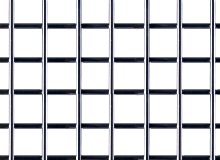 The Trap Man UK
manufacturers & suppliers of humane cage traps.
The Trap Man UK
manufacturers & suppliers of humane cage traps.  The Trap Man UK
manufacturers & suppliers of humane cage traps. The Trap Man UK
manufacturers & suppliers of humane cage traps. |
|
|
The Trap Man, Monarch Rat Trap Multi catch Repeating Live Catch Humane Rat Trap, Our Snappy wooden Rat Trap, Family Multi Catch Humane Rat Trap, run through rat trap and the Self Set Rat Trap Rat
Trap Multi catch Repeating Live Catch Humane Rat Trap, Our Snappy Wooden Rat
Trap and Family Multi Catch Humane Rat Trap
Rats need shelter, food and water to survive. Rats are efficient burrowers and favour compost heaps and the ground underneath hedges and sheds, where they will dig shallow burrows and form nests with dry grass and leaves. In houses rats will nest in wall cavities and beneath floor boards. Rats are good climbers and can climb vertical brick walls. Rats are good swimmers and are at home in sewers where they have food, water and shelter. The front teeth of rats grow continuously and to keep the teeth to a useful length the rat needs to gnaw on hard objects all the time. Such objects can include lead water pipes, brickwork, electric cables, wood and anything else available. Rats are usually active at night but may also be active in daytime. Rats usually have well worn runs between their living area and their source of food and water. The life expectancy of a rat is around one year, during which time a female rat will typically breed five times with an average litter of 8. Female rats will have their first litter at the age of 4 months.
Rats are a major hazard to health. Rats spread many forms of disease, especially through their droppings and urine. Some of these diseases can be fatal to man, such as leptospirosis, although the incidence of such diseases is rare. They may eat food which is intended for human consumption and they often damage much more which has to be discarded. Through their gnawing habit they can cause considerable structural damage to woodwork, water pipes, electric cables etc.. Multi catch rat trap for areas of large rat infestations,
No baiting required with our run through rat trap, just set the rat trap along a wall, check on it regularly and at least twice a day.
This trap man run through trap requires no baiting, the run through design relies on the rat, to enter the tunnel trap during its normal hunt for food. The rat simply steps onto the central treadle plate that triggers both doors to spring shut.
Single catch rat trap 11"x3.5"x3.5" bait hook with fish or bacon requires 5" above the trap to clear the setting bar Rat cage trap simple spring loaded door with locking bar 18"x6"x6" with 3/4" holes
Two
simple design kill type traps that dispatches rats quickly with a strong
spring action bar.the snappy rat trap and the all metal selfset rat trap
no longer available Simple
design kill type traps that dispatches rats quickly with a strong spring
action bar. Signs to look out for are damage caused by gnawing, holes, smears and droppings. Packaging will often show tooth marks, the size of which will indicate whether it is a rat or a mouse. Holes made by the rats in doors and walls, and the entrances to nests, are about 80mm ( 3 inches) in diameter, and nests may be made in wall and floor cavities. Having established the best route from one place to another, rats tend to use this route frequently. This run becomes soiled with the grease and other dirt on the rat's fur and will be very apparent in even moderate infestations. Foot prints are sometimes apparent on soft or dusty surfaces. The amount of rat droppings present is a good indication of the size of the infestation and how long they have been there. Control Removal of food, water and harborage will deny rats their three main requirements for survival. The infestation should be controlled by trapping. To be effective, traps need to be efficiently managed and should not be accessible to other animals or humans, and extra care is needed if there are children in the house. It is essential that all other food sources are removed in order to force the rats into take the bait. Repair of damage caused by rats may be required, and proofing of the premises from further access to the property is essential. Capping open drains, filling holes with cement or similar, placing rat proof netting round the base of wooden out buildings, sheds etc. Rats
are smart !. When handling dead rats, use precautions to avoid the possibility of disease transmission Use rubber gloves. Apply household disinfectants at recommended concentrations to dead rodents, rodent droppings, nest and surrounding area, and allow for at least 15 minutes contact time before removal. Clean the area with paper towels or a mop. Double bag the disinfectant-soaked rodent and cleanup materials securely in plastic bats and tie up the tops. Thoroughly wash hands with soap and water and dispose of gloves.
|